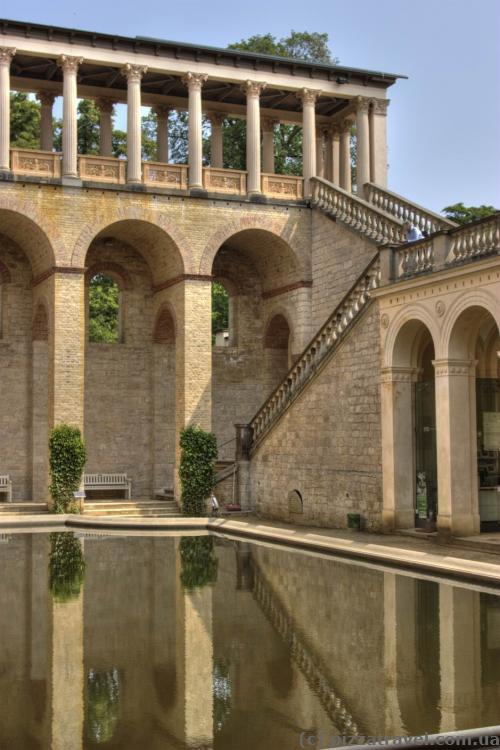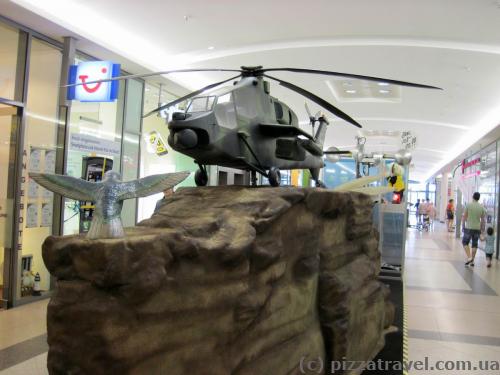Potsdam is a suburb of Berlin. Being relatively small, the city has an incredible number of attractions and rich history. Potsdam is the first in Germany by density of interesting places.
Potsdam is over 1,000 years old, but its fate changed dramatically in 1660, when it was chosen as the hunting residence of Frederick William I, Prince of Brandenburg. Subsequently, the city became the residence of the Prussian royal family. Majestic buildings were mostly built during the reign of Frederick the Great. Palaces of the Sanssouci park are famous for gardens and Rococo interiors.
It's not easy to see everything in one day due to large distances. We took bikes, got tired after 6 hours and visited not all sights. One can even say that Potsdam is ideal to explore by bike. Perhaps that's why only in Potsdam you can rent a bike directly on the platform where the city train from Berlin arrives.
From the train station we went to the right along the Tifer lake. The first interesting object is the Babelsberg park and the castle with the same name, built in 1835-1849. For over fifty years, the castle served as the summer residence of Prince William, the future Kaiser Wilhelm I and his wife Augusta. On September 22, 1862 King William I talked to Bismarck in the castle and the surrounding park. As a result, Bismarck was appointed as a Prime Minister and Minister of Foreign Affairs. Be sure to walk around the castle - you'll find some interesting places among the trees.
From the castle opens a view of the Glienicke bridge. The bridge was built in 1906, it's ordinary, but world famous. On February 10, 1962 there was an exchange of Soviet spy Rudolf Abel for US pilot from a spy plane Francis Gary Powers and US student Frederic Pryor. Then other exchanges were held there and the bridge received its second name, "Spy Bridge".
Having passed over the bridge, we headed on to the Cecilienhof Palace in New Garden. This is another place that has become famous thanks to the post-war events. English country style palace was built here in 1914-1917. The last residence of the Hohenzollern family was built by Wilhelm II for his son Crown Prince Wilhelm and his wife Cecilia. On front yard lawn you can see a red star-shaped flower bed that was planted by Soviet soldiers during preparation for the Potsdam Conference (July 17 - August 2, 1945).
The heads of government of the three countries - Harry Truman (USA), Joseph Stalin (Soviet Union) and Winston Churchill (UK) discussed here further steps of post-war Europe. Basically, all issues were related to changes of the borders of Germany and the USSR. At a conference in Cecilienhof, Truman gave the order over the phone to drop an atomic bomb on Hiroshima.
There's a museum in several rooms now, while the greater part of the palace is a hotel.
We move on and come to a very unusual structure - the Belvedere on the Pfingstberg hill. This pavilion should have become part of a large architectural ensemble conceived by King Frederick William IV. He planned to build a terraced park with water cascades, but, unfortunately, only the Belvedere was built.
You can reach the roof via a spiral staircase, although I cannot say that the panorama from the top is very picturesque.
From the Belvedere we went down through the park to the Russian village Aleksandrovka. All buildings here are made in the Russian style, including the church.
Along the Voiltaireweg Street we went to the Sanssouci park and entered it behind the Sanssouci Palace. Entrance to the park on bicycles is prohibited. All places in Potsdam visited by us before hadn't been crowded, but there was a lot of visitors in the park. All touristic buses stop here so we don't like such places.
The Sanssouci park ensemble has an area of 290 hectares and is the largest and most known in Brandenburg. The Sanssouci Palace was built based on the project of King Frederick the Great in 1745-1747 and is the most famous of Potsdam palaces. The palace, the park and other facilities of Potsdam are on the list of the UNESCO World Cultural Heritage.
There are other palaces and interesting places in the park, but we had no strength left and had to return. The second factor was a large number of vistors in the park. We would also like to visit:
- New Palace (1763-1769) in the Sanssouci park
- Charlottenhof Palace (1826-1829) in the Sanssouci park
- Orangery Palace (1851-1864) in the Sanssouci park
- Churches and other sights in the Sanssouci park
- Marble Palace (1787-1792) in New Garden
- Brandenburg Gate (1770)
- Dutch block (1733-1740)
- Central city square
We also found some interesting installations at the railway station.
Map of Potsdam and the Sanssouci park
Getting there: By S-Bahn from Berlin.

































